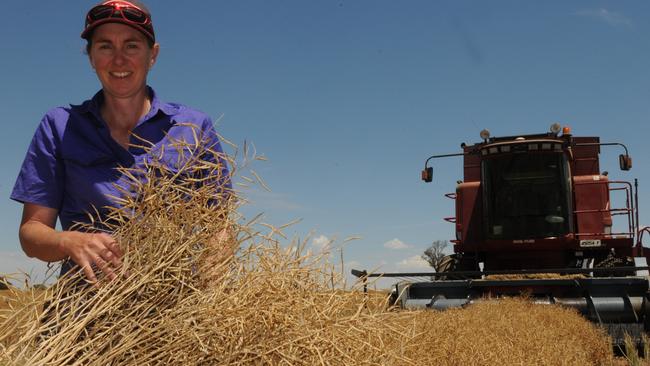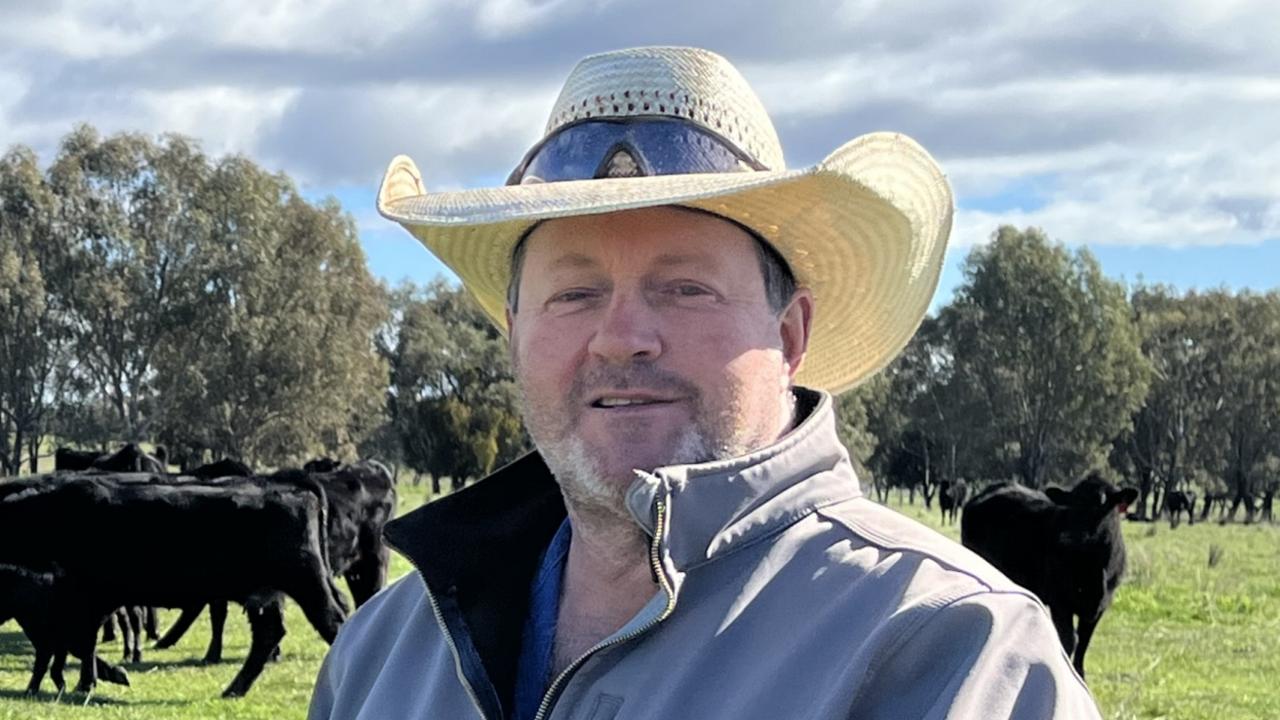Sheep and crops balance important for Clint and Donna Dunn from Culcairn
DUAL-purpose crops and prime sheep are an ideal mix for this farming family, writes FIONA MYERS.

THERE is no mix-up about the way the Dunn family farm.
They are clear they are sheep farmers who grow crops rather than the other way around.
And it is this philosophy that has driven their business, from buying their first block of 130ha about 15 years ago to now farming about 815ha of their own country and leased area near Culcairn, in southern NSW.
Clint and Donna Dunn both had a background in the shearing industry and proudly acknowledge it was shearing that helped get them started as farmers in their own right.
Since then, careful decisions and hard work have allowed them to expand their business to about 400ha of cropping each year and running about 2000 ewes.
Despite cropping a reasonable area, Donna said the sheep were the main part of the business and the greatest contributors to the overall profit.
It was the Dunns’ love of sheep and the ability of stock to earn returns that sees them grow mostly grazing crops to maximise returns from their land. This year, they did grow about 60ha of trojan wheat, a non-grazing variety, to sell some of their cropping into a higher protein market.
It was a good decision as the crop yield five tonnes/ha.
They also grew about 80ha of canola, which also performed well, yielding about two tonnes/ha, with 47 per cent oil content.
But the rest of their oats, barley and wheat were grown specifically to be dual-purpose crops, allowing grazing during peak feed requirement times for their prime lamb flock, but then also being harvested for grain.
FOOD FOR THOUGHT
IT’S that decision, Donna said, that had proved its worth, given the tricky harvest conditions this year, with rain right at the wrong time.
“It has been disappointing to get the rain at harvest, but at least we have already had some value from these crops,” Donna said.
“We might look at a paddock and the yield and the returns and think it has not been brilliant, but then you think back and remember that it ran 200 ewes and lambs for three months.
“You have to factor that value in when working out the returns from that crop.”
This year they have grown grazing wheat, barley and oats, and in the past have even grown a grazing canola variety.
The Dunns run a mix of Merino and crossbred ewes, joining their Merinos sometimes to Border Leicesters to build up their first-cross ewe numbers, and at other times to Merinos to keep their Merino ewe numbers up.
The main focus for their sheep flock is prime lamb production, turning off White Suffolk-cross suckers from a March-September lambing.
This year the suckers, which have weighed about 48kg liveweight, have averaged an impressive $160 sold straight off their mothers.
The Dunns get their ewes scanned for single and twins, but this year also scanned them for early and late lambing.
“It only cost a little bit more but it was certainly worth it,” Donna said.
“We were able to run mobs of singles and twins, and also early and late lambers, and it means you could feed a mob according to when it was due to lamb.
“There is no point feeding a late-lambing single ewe a lot as you run into (lambing) troubles down the track.
“It also means that we only check the ewes that are due to lamb at that time and not all the mobs, and that saves us time.”
FOR THEMSELVES
WHILE Donna’s family farms in the district and helps out at times, the couple have not relied on them and have bought most of their own equipment. They get contractors in only for baling hay and windrowing canola.
That includes two tractors — so they can sow and spray at the same time — and their own header, despite Clint not wanting to do this initially.
“Clint said early on that there was no way he was going to buy a header,” Donna said.
“But it’s years like this year when everyone would want a contractor at the same time with rain coming and it just made sense for us to buy one to be able to harvest the crops when we needed to.”
Donna said there was no doubt the mixed farming nature of their business had allowed them to grow so quickly, but it had also presented greater challenges logistically.
“The rain did delay harvest, but it meant that we were getting a few sheep with flystrike so we went out and treated the whole lot in our down-time waiting for harvest to start again,” she said.
“There was no way we could be chasing fly in sheep when we got back into harvest so that’s why we used Click (preventative treatment) so we knew the sheep would be OK.
“Mixed farming is certainly the way to go for us and has allowed us to spread our risk.
“This year was a clear example of what could have gone wrong with 100mm at harvest, but at the same time, we’d already had grazing off the crops and we had a great year for lamb sales.”
Clint and Donna are not finished yet and hope one day soon to own more country.
“We wold love to buy more land for both our kids, Matilda and Charlie, who both love farming too,” she said.


